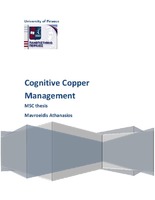| dc.description.abstractEN | The current world financial crisis has been extended to all sections of economy. Telecommunications is a sector that has been much affected and the outcome of this has slowly started to grow: consolidations as the only way of surviving, bankrupts of ICT companies, loose of faith of investors etc. This uncertain and risky environment, demands a closer look on the investment plans of telecommunication companies, minimization of the OPEX and capitalization of the used CAPEX. On the other hand, plans for new services like high definition channels of IPTV and other bandwidth demanding applications, in most of European countries, seem that have not the penetration operators have visualized. As a result, FTTH -FTTC (fiber to the home – cabinet) networks that realize such services but require vast amounts of investments in civil works, are kept aside as potential future plans. Fixed operators are trying to find ways to fully utilize their existing investments, selling access and content to subscribers using the old copper infrastructure as the physical medium for these services. The old copper infrastructure initially does not seem as an appropriate medium for such services. There are drawbacks of using it to serve the subscribers and there always is a question to proceed to new investments of fiber. The problems of the medium come from the fact that this infrastructure was built around the second half of the previous century and its purpose was to deliver analogue voice service. No proper shielding, frequent oxidations, wet sections, bridge taps, unbalanced loops, impulse noise and crosstalk problems, are all problematic situations describing the copper condition. In many countries, copper infrastructure is usually controlled by the (former) public operators providing unbundled access to others, the so called local loop unbundling - LLU. Though technology has evolved and telecommunication manufacturers could provide more sophisticated equipment. Telephony became digital and data services arrived. ADSL2+ is a technology providing line rates of up to 24Mbps in downstream direction and 1mbps in the upstream. Packets transferred using the copper, made the medium adequate for not real time application, such as internet browsing. The big problem came when real time, high bandwidth applications were needed to be served. For example, 2 high definition channels of IPTV in mpeg4 coding require around 9mbps of synchronization rate, in an error free line. The attempt of selling this service, apart from the factor that the coverage is limited, requires a huge amount of OPEX for truck rolls with field engineers in order to guarantee the quality of the copper and back office engineers for monitoring lines, providing relevant settings to the network equipment for the lines’ unique settings. | |



